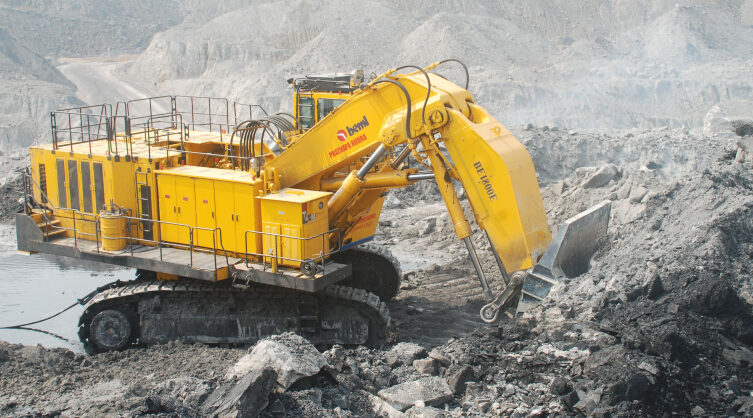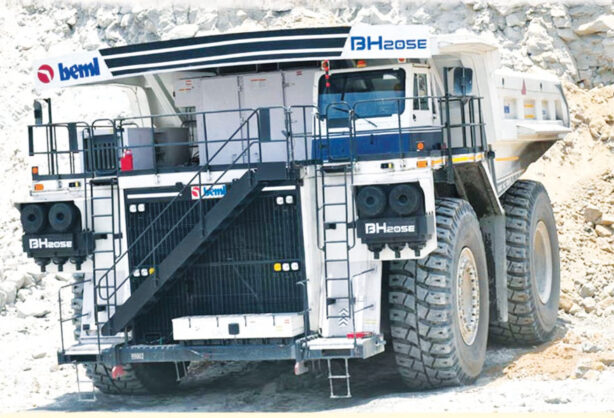In an interview with B2B Purchase, Shantanu Roy of BEML LIMITED emphasises modernisation in the coal mining industry to achieve production targets, prioritising environment and worker safety.
How do IoT, GPS sensing and 3D imaging in equipment improve underground mining efficiency?
IoT & GPS sensing has impacted almost every mobility-driven vehicle, creating a smarter perception about machines and equipment like Load Haul Dumper (LHD) and Side Discharge Loader (SDL) meant for underground mining usage, which is no exceptions. The arena continuously evolves as IoT and GPS sensing is rapidly advancing. So, underground mining equipment is poised to incorporate Advance Driver Assist Systems (ADAS) and tele-operation into them, which will pave the way ultimately for mine mechanisation and Automation.
Certain challenges hinder implementing and absorbing IOT and GPS sensing technologies, especially in underground mining equipment and mines, where satellite signals cannot penetrate the ground and reach mines. These issues must be overcome before underground mining equipment and mines will see sluggish growth in mechanisation by leveraging IoT and GPS sensing technology.
How far is modernisation happening in Indian mining?
The coal mining industry aims to meet future production targets by enhancing productivity and safety through mechanisation, online monitoring, wireless communication underground, and IT systems. Modernisation focus areas include fuel-efficient electronic engines, safety features on equipment, auto fire detection, and centralised monitoring for quicker checks and higher reliability. Auto lubrication systems and AI integration improve availability and reliability, while environmentally friendly electric motor-driven excavators with zero emissions and low noise ensure sustainable mining practices. These advancements pave the way for achieving production goals while prioritising environmental consciousness and worker safety.

How do emission control equipment and solutions help customers and contractors save money on infrastructure?
High levels of harmful emissions in diesel exhaust pose significant risks to mine workers’ health, performance, and safety. To address this issue, mines are increasingly embracing electrification and large-capacity machines to reduce emissions and overall operating costs while reducing reliance on fossil fuels and foreign exchange.
The exploration of new battery-operated power trains with lithium-ion battery packs is underway to overcome the hindrance of trailing cables during operation. Additionally, some equipment is being tested with hydrogen fuel cells to reduce charging time and improve working hours. Compared to internal combustion engines (ICE), electrical power trains offer higher efficiency with fewer components and lower maintenance requirements.
However, new engines that meet stringent emission norms, like CEV IV/V, are costly and necessitate complete equipment redesign with improved cooling systems, resulting in increased ownership and operational costs. In this context, electric-driven equipment emerges as a promising solution to meet emission standards and save costs for customers and contractors.
![]()
Which emerging trends influence India’s mining dynamic, including underground mining?
In the coming years, the demand for minerals is expected to grow, but several key trends will determine prevailing mining companies. Embracing a low-carbon economy will be crucial, with companies using renewable energy, electric or hydrogen-powered trucks, and incorporating recycling in their value chains to offer low-carbon premium minerals.
Accessing resources will become more challenging as world-class reserves in low-risk areas deplete, forcing companies to adopt new extraction and processing technologies or venture into frontier mining areas previously deemed economically unviable. Moreover, meeting the higher production targets in coal mining necessitates deploying advanced, high-capacity equipment. Adapting to these drivers will be essential for mining and metals companies to succeed.
How do you assess the mining activity in India compared to the potential?
India is well endowed in terms of most minerals. The country produces as many as 87 minerals, including four fuels minerals, 10 metallic minerals, 47 non-metallic minerals, 3 atomic minerals and 23 minor minerals (including buildings and other materials). The Mineral Development and mining sector is a significant contributor to India’s GDP growth, as there is a strong correlation between growth in the same and the manufacturing sector, making it a catalyst for the growth of basic industries such as power, steel, cement, etc.
Emphasis should be given to exploration to continuously augment the resource/reserve base of the country and harness the existing resources through scientific and sustainable mining, including beneficiation technologies and focusing on zero-waste mining. This is possible only through an investor-friendly regulatory regime that provides for the security of tenure and encourages investment in exploration and critical infrastructure for developing the mineral and mining industry.
What safety concerns do you want to address in mining and quarrying activities in India?
Recent discussions have focused on stringent safety and comfort measures for mine operators, aiming to ensure accident-free operations and enhance productivity. Important safety features include providing a safe access point with three-point support for ladder systems, an alternate emergency exit path, and an operator cabin equipped with ROPS and FOPS. Additionally, the operator cabin features an air conditioning system for comfort, an ergonomically designed seat with mandatory seat belts and reminders, rear vision cameras, all-around visibility mirrors, and a warning system for operator fatigue with event recording. Furthermore, the equipment is equipped with an auto fire suppression system. These safety features have been incorporated into our equipment, prioritising the well-being of the operators and overall efficiency in mining operations.

How can India improve export potentials for mining solutions to the rest of the world?
The global demand for mining solutions is rising, particularly in developing countries. India can tap into its manufacturing capabilities to meet this demand and become a key global mining solutions market player. To enhance its export potential for mining solutions, India can implement strategic initiatives:
Firstly, fostering competitiveness through innovation is crucial. Indian companies should invest in research, adopt new technologies, and collaborate with international partners to bring cutting-edge solutions.
A skilled workforce is essential to meet global market demands. India’s large and skilled workforce can be trained to handle advanced mining solutions, nurturing a strong talent pool in the industry through investment in training programs.
We must also look at ways to promote Indian mining solutions through effective marketing and branding by participating in industry events and showcasing Indian solutions in trade publications to increase India’s outreach and visibility.
Coming to financial support, the Indian government can offer tax incentives, export financing, and streamlined regulatory processes to facilitate mining solution exports.
Furthermore, focusing on sustainable and environmentally friendly solutions will be a key differentiator. India can lead in this area by developing and promoting solutions that minimise the environmental impact of mining, such as leveraging renewable energy sources and reducing water consumption and waste.
What are the procurement constraints in the modern world of mining?
Mining companies are facing various procurement constraints, including the ongoing impact of the Covid-19 pandemic, geopolitical and economic uncertainties, labour shortages, port congestion, container availability issues, high shipping costs, the Ukraine war, inflation, raw material shortages, and increased demand for natural resources and mining equipment. These factors have caused significant disruptions in the supply chain, resulting in longer delivery times, production constraints, and higher production and operating costs.
Cookie Consent
We use cookies to personalize your experience. By continuing to visit this website you agree to our Terms & Conditions, Privacy Policy and Cookie Policy.


















